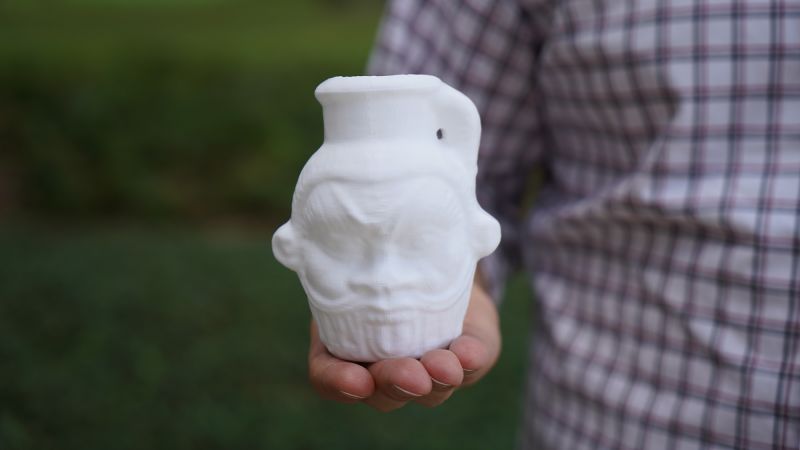In a groundbreaking study published in the journal *Scientific Reports* on November 13, researchers have unveiled remarkable findings related to ancient Egyptian practices involving a 2,000-year-old Bes mug. The mug, adorned with the head of Bes—an ancient deity associated with fertility, protection, and magical purification—was found to contain residues of psychedelic substances, bodily fluids, and alcohol. This discovery offers rare insights into the ritualistic use of beverages in ancient Egypt, particularly those consumed during sacred ceremonies.
The scientists, led by Davide Tanasi of the University of South Florida, analyzed the contents within a Bes mug currently displayed at the Tampa Museum of Art. For centuries, Egyptologists had speculated about the purpose of these mugs, pondering whether they held sacred water, milk, or alcoholic drinks used in magical or religious rituals. Branko van Oppen, a co-author of the study and curator at the Tampa Museum of Art, remarked on the long-standing enigma of these vessels, noting that this new research contributes to understanding their mysterious role in ancient Egyptian society.
Through chemical and DNA analyses, the research team was able to identify various psychotropic and medicinal plants, supporting ancient texts that describe Egypt’s ritualistic practices. Tanasi noted that the study not only provides scientific evidence that correlates with Egyptian myths but also illuminates poorly understood rituals that likely took place in the so-called Bes Chambers near the monumental Pyramids of Giza.
Researchers have long found Bes mugs intriguing due to the lack of context regarding their use. “These vessels were not ordinary objects,” Tanasi explained. “They were ritual artifacts crafted in limited numbers, likely kept by those who actively participated in worshipping Bes.” The analysis of this particular mug is part of a larger examination of ancient Mediterranean nutrition, with the aim to better understand the diet and rituals associated with the region.
The team expected to find evidence of a potent alcoholic beverage, given the mug’s small size—standing at just 1.7 inches (4.5 centimeters) and capable of holding 4.2 fluid ounces (125 milliliters). However, they uncovered a complex recipe consisting of an alcoholic base enhanced with an array of flavoring agents, human bodily fluids, and ingredients believed to possess medicinal and psychotropic properties. This intricate mixture was no ordinary drink but rather a concoction specifically designed for ceremonial use.
Interestingly, the identified substances included fermentation yeasts indicative of a beer or wine base, complemented by honey, sesame seeds, and various other botanicals that would have contributed distinctive flavors. Notably, certain bodily fluids detected within the mug were interpreted as possibly being blood, breast milk, or mucus, which researchers suggested may have been intentionally included for their symbolic or ritual significance.
Among the plants found in the residues were Egyptian blue water lily and Syrian rue, known for their hallucinogenic properties. Tanasi suggested these ingredients may have been used to induce visionary experiences or heightened meditative states, aligning with the spiritual practices of the time. As Tanasi pointed out, women seeking guidance during the perils of childbirth may have utilized these ceremonies, which often took place within the Bes Chambers—sites of reverence and ritual.
Overall, these findings not only shed light on the ingredients used in ancient Egyptian rituals but also open avenues for future research, prompting scientists to investigate whether consistency exists among similar artifacts in other museums. Dr. Betsy Bryan, an expert on Egyptian art and archaeology, noted that further exploration could reveal variations in the size and use of such mugs, hinting at diverse applications, including those related to childbirth.
As established in historical texts, inebriation held an essential role during key celebrations in ancient Egypt, such as during the inundation of the Nile—a season intertwined with fertility and agriculture. Caitie Barrett, another expert in the field, emphasized the connection between ritual inebriation and ceremonies honoring deities like Hathor, highlighting the potential role of Bes mugs within those rituals.
The discoveries surrounding the Bes mug invigorate our understanding of ancient Egyptian culture, illuminating the complex interplay between religion, ritual, and medicine in their everyday lives. By continuing to study and analyze these ancient artifacts, researchers can uncover deeper insights into the beliefs and practices of one of history’s most fascinating civilizations.



